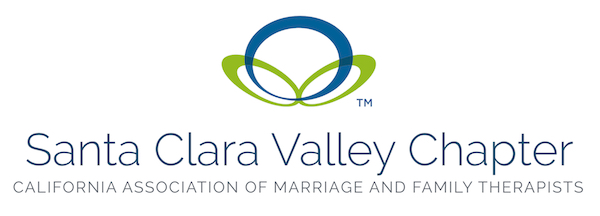Nancy Wesson, Ph.D. is the founder of the Center for the Study of Group Psychotherapy (CSGP.org), a nonprofit group therapy training center.
Individual and group psychotherapy are both considered effective and highly therapeutic forms of psychotherapy. However there are differences in how the therapeutic process works in the two modalities of psychotherapy. In this article individual psychotherapy will be defined as the one-on-one therapeutic process between a client and an individual psychotherapist. Group psychotherapy will refer to psychotherapy within a group with several clients meeting at the same time. There is a special emphasis in this article on interpersonal group psychotherapy as defined by Dr. Irvin Yalom.
Different therapeutic alliance: in individual psychotherapy the therapeutic alliance is between a client and a psychotherapist. In group psychotherapy the therapeutic alliance is with the group.
Individual psychotherapy is a one-on-one therapeutic relationship with a psychotherapist. The group psychotherapist has a different role in the therapeutic process. The group psychotherapist leads a group comprised of several clients through the therapeutic process.Different therapeutic factors (components of the change process) are at work in individual and group psychotherapy. Unlike individual psychotherapy, group psychotherapy is a team approach.
Different Therapeutic Alliance
There is considerable clinical evidence which links therapeutic alliance (engagement in a therapeutic bond ) with psychotherapy outcome. Individual psychotherapy is a place for clients to work through psychological issues within the context of a one-on-one therapeutic alliance. In group psychotherapy, the therapeutic alliance is with the group comprised of peer group members and the group psychotherapist. The group psychotherapy alliance can be understood as the emotional bond held by each group member for the other group members and the group psychotherapist.
Different role of the psychotherapist
The individual psychotherapist’s role is to provide a one-on-one protected therapeutic relationship with a client. In contrast, the role of the group psychotherapist is quite different. The group psychotherapist leads several clients (peer group members) in an exploration of relationship issues and maintains the group process.
In individual psychotherapy, the focus is on the individual client and resolution of their psychological issues through the therapeutic process. The therapeutic change process in group psychotherapy is different. In group psychotherapy peer group members interact with each other and interpersonal skills are learned through several different peer relationships. The group members and group psychotherapist observe interactions as they take place within the group and provide feedback. This is a very different change process than in the one-on-one relationship of individual psychotherapy.
Different therapeutic factors are at work in individual and group psychotherapy
There are different factors that reflect different processes in individual and group treatment. The factors of insight and problem solving are more important to the process of individual psychotherapy. The therapeutic factors of altruism, interpersonal skill building, and group cohesiveness are emphasized more in group psychotherapy. This is a substantially different therapeutic process involving different therapeutic factors than individual psychotherapy.
Unlike individual psychotherapy, group psychotherapy is a team approach
Relationships between group members and the therapeutic bond between them are the most important aspects of the group therapeutic process. In group psychotherapy, members experience in-vivo closeness with each other, learn to trust each other, and develop a “team” approach which entails the development of an active cohesive group. In group psychotherapy clients become part of a community which is like a healthy family and clients have the opportunity to experience multiple positive and healthy relationships. This is known as the “corrective emotional experience.”
For many of our clients, relationships have been painful and difficult. As psychotherapists we work with our clients to improve the relationships in their lives. According to interpersonal theory, in group psychotherapy a client demonstrates the very interpersonal behavior which is causing problems in his/her relationships. This dysfunctional relationship behavior creates feeling reactions in other group members and is described and reflected back to the client through feedback. Clients become aware of their unhealthy interpersonal behavior through the eyes of peer group members and how this behavior interferes with closeness and support. They then have the opportunity to develop healthy interpersonal skills and practice these skills within the group. Clients learn how to develop meaningful and close relationships through this process.
Conclusion
The healing power of psychotherapy exists in individual and group psychotherapy. Involvement and engagement in healthy relationships with peer group members is an important aspect of the therapeutic process in group psychotherapy, which is different than the one-on-one therapeutic process of individual psychotherapy. In both forms of psychotherapy clients learn about the “work” and “joy” of relationships which have honesty and emotional depth.
Nancy Wesson, Ph.D., CGP, is a licensed psychologist and Certified Group Psychotherapist (CGP). She is the founder of the Center for the Study of Group Psychotherapy (CSGP.org), a nonprofit group psychotherapy training center which offers group psychotherapy training courses. Dr. Wesson has studied group psychotherapy for 30 years. She has been trained by Dr. Irvin Yalom, M.D. and the American Group Psychotherapy Association. She has led two weekly psychotherapy groups for 27 years. CSGP.org DrNWesson@CSGP.org.
References
Holmes, S., & Kivlighan, D., Jr. (2000). Comparison of therapeutic factors in group and individual treatment processes. Journal of Counseling Psychology, 47, 478-484.
Klein, A., Markowitz, J., Rothbaum, B., Thase, M., Fisher, A., & Kocsis, J. (2013) The Relationship between the Therapeutic Alliance and Treatment Outcome in Two Distinct
Psychotherapies for Chronic Depression. Journal of Consulting and Clinical Psychology, 627-638.
Wesson, N. (2007). Becoming a true member of a psychotherapy group. The California Psychologist, 21, 22-25.
Yalom, I., & Leszcz, M. (2005). The theory and practice of group psychotherapy (5th Ed.). New York: Basic Books.
